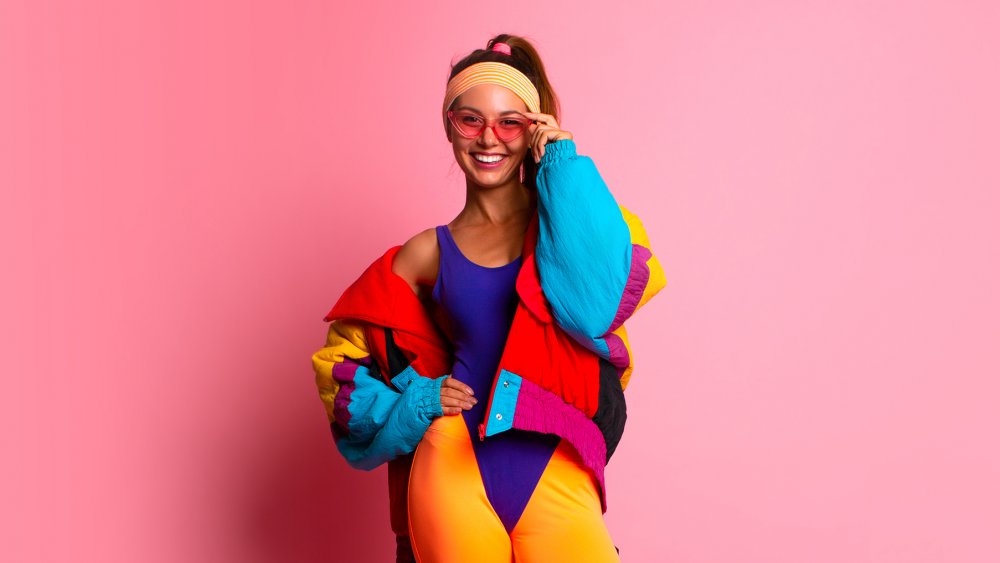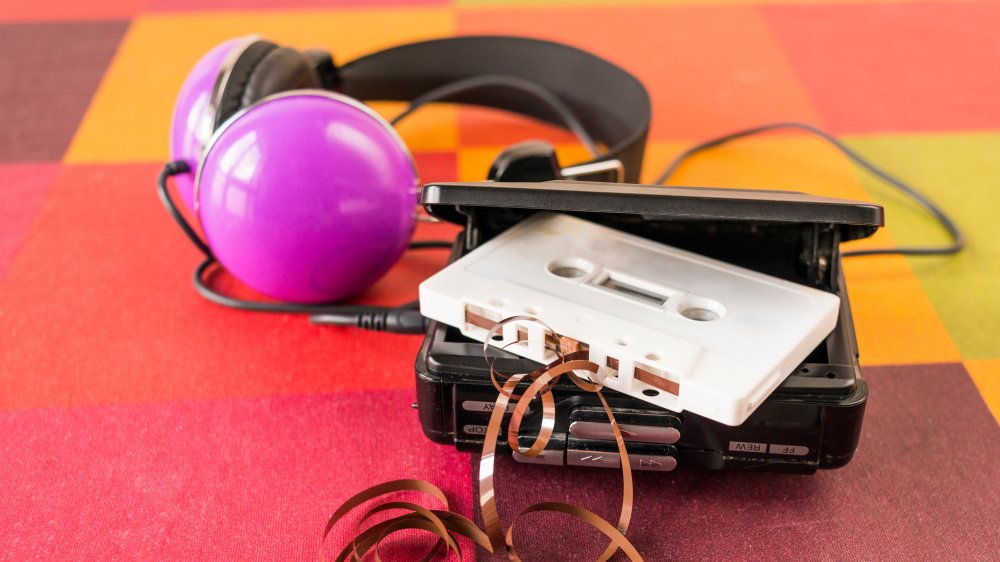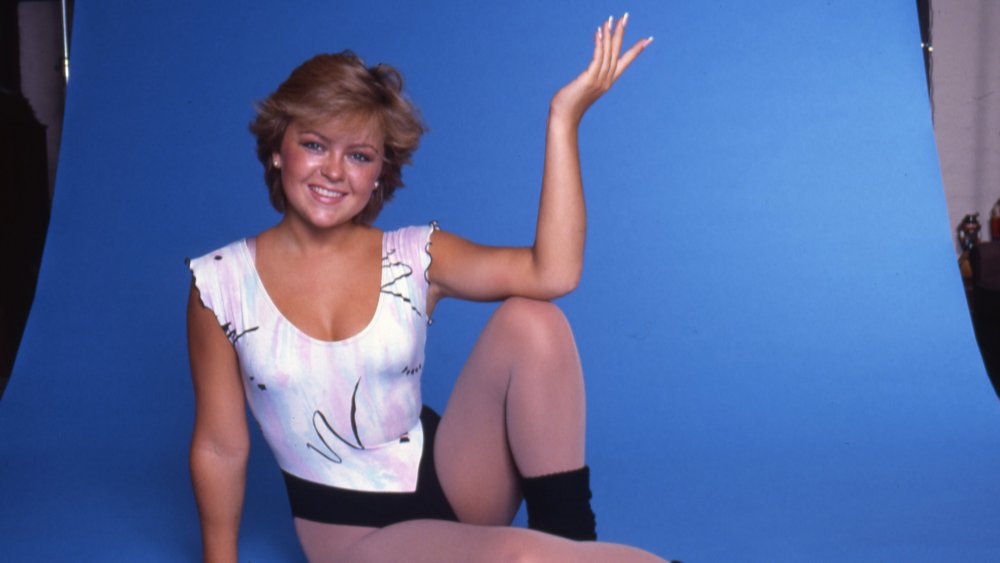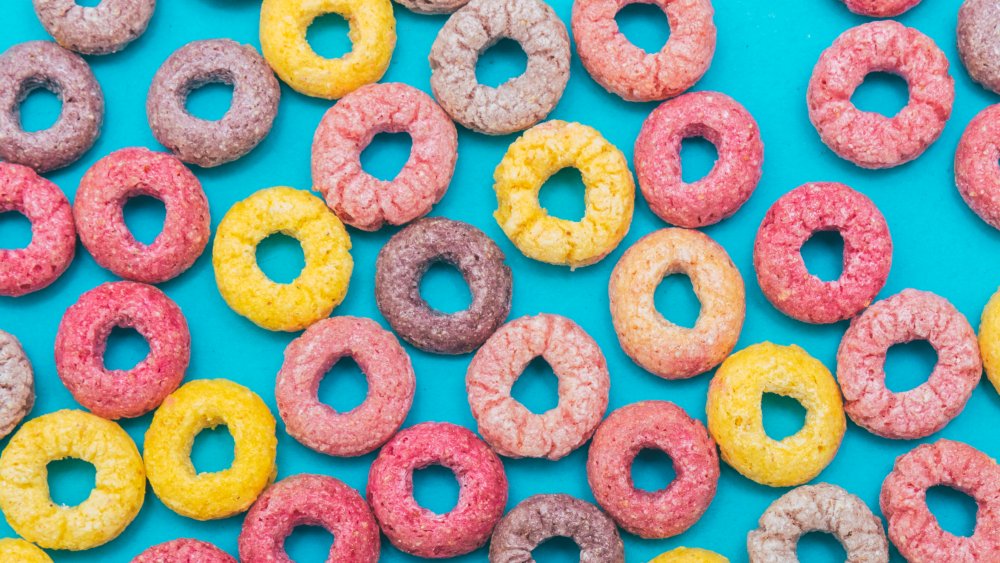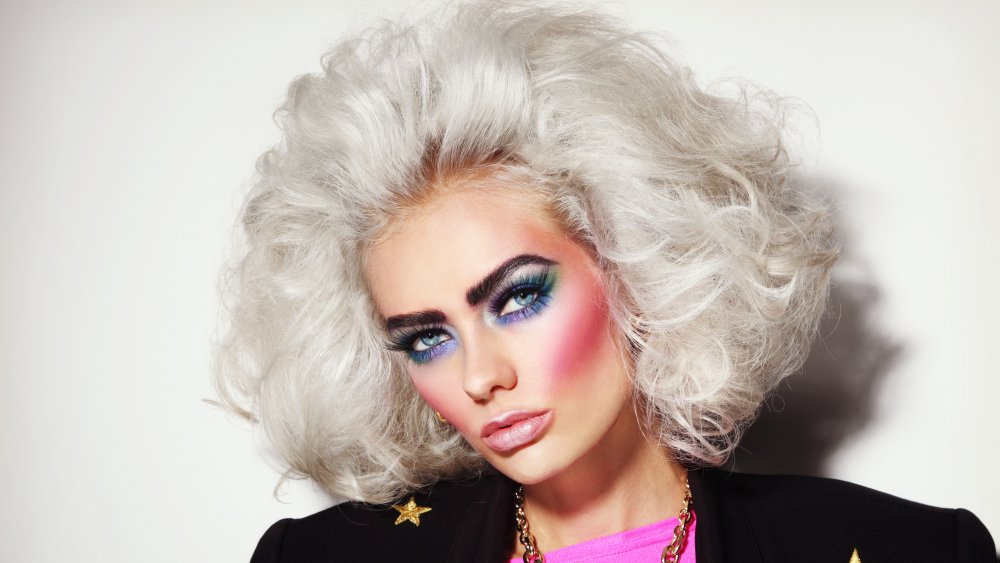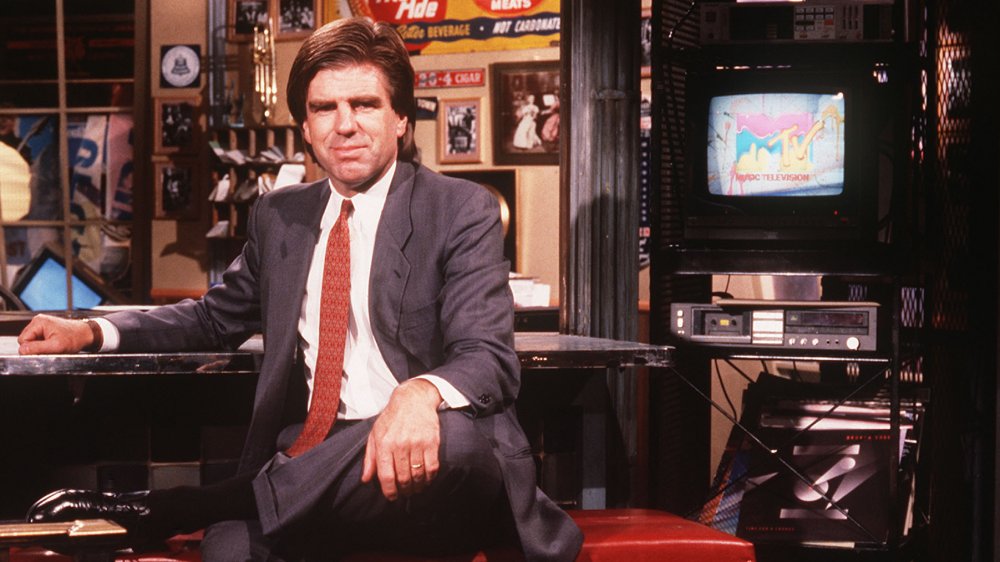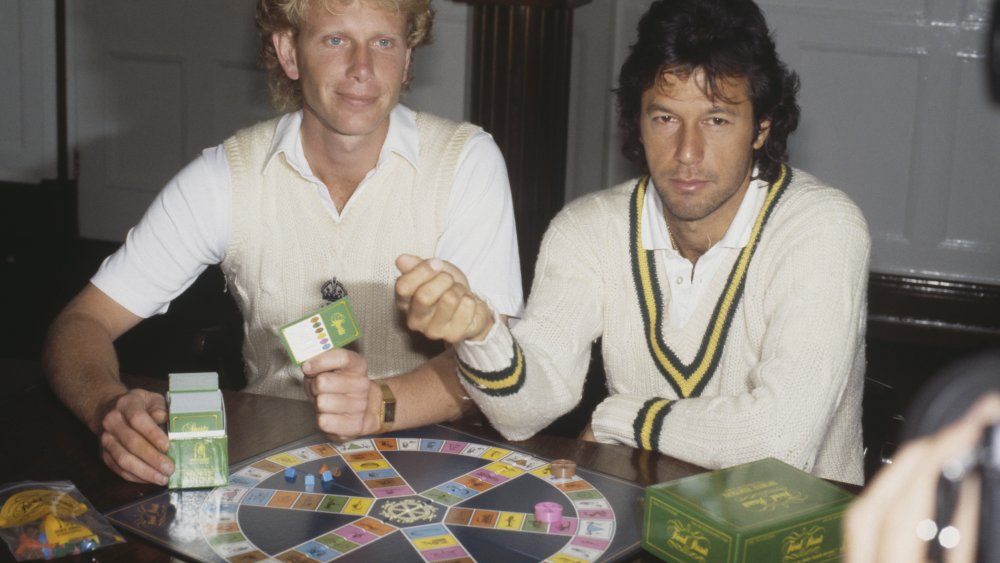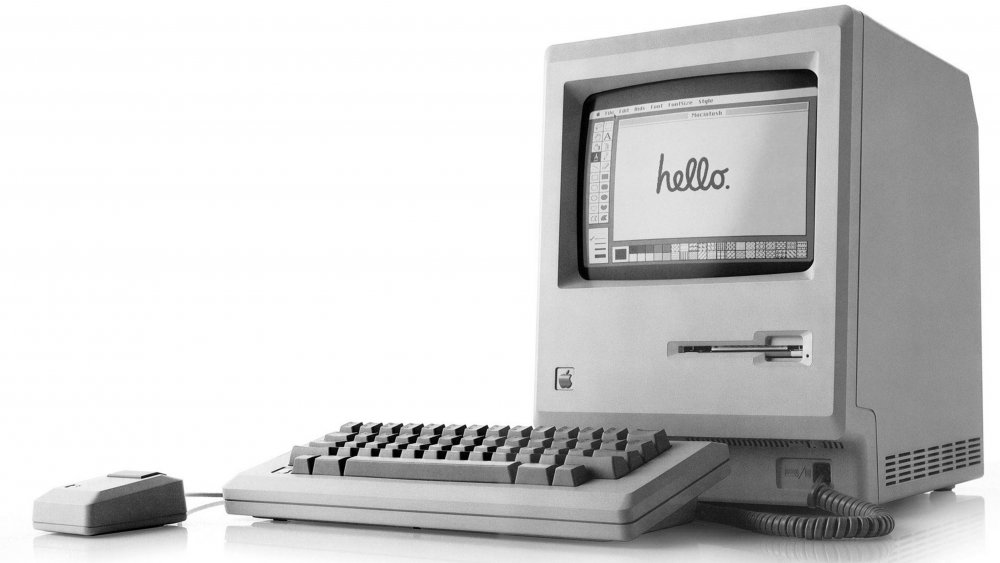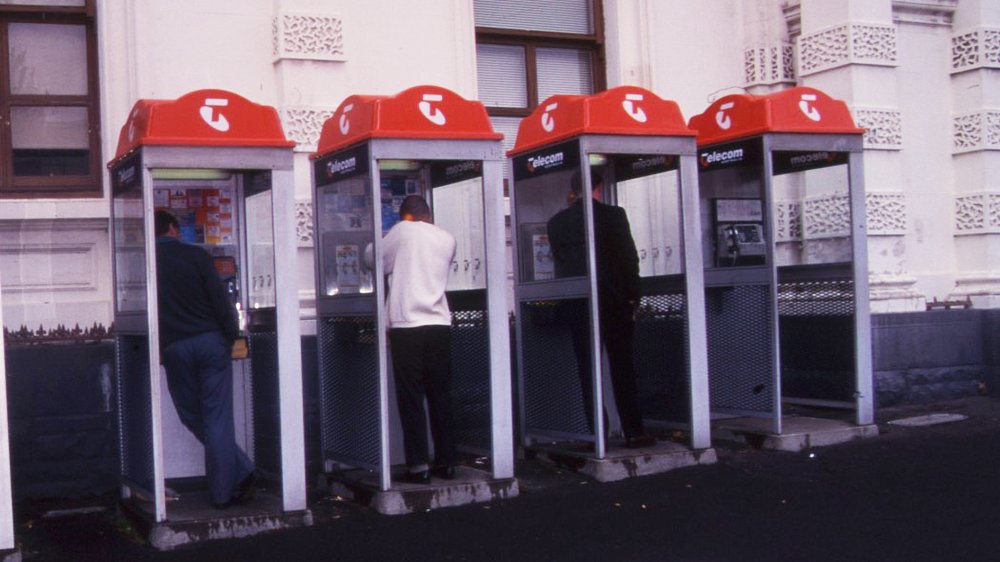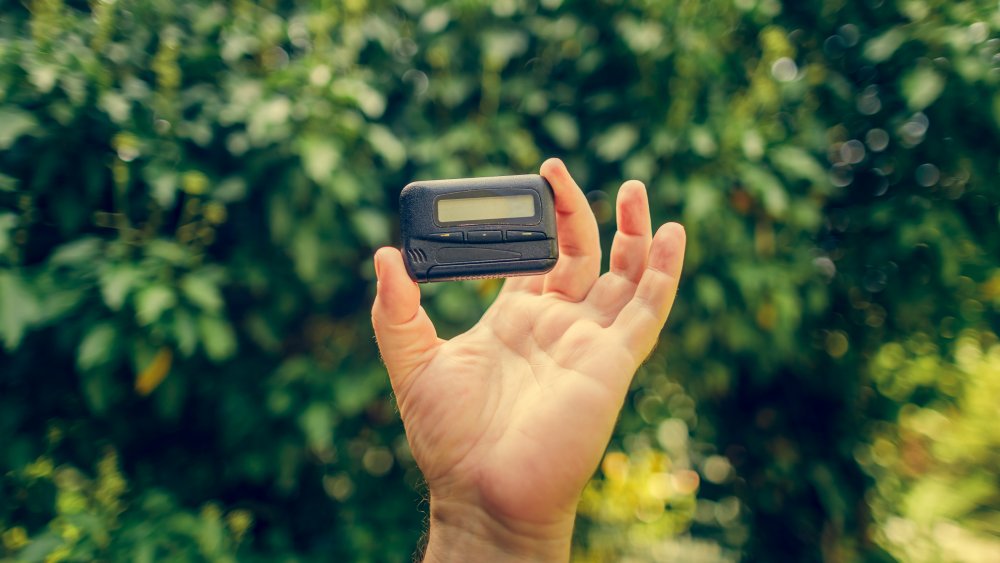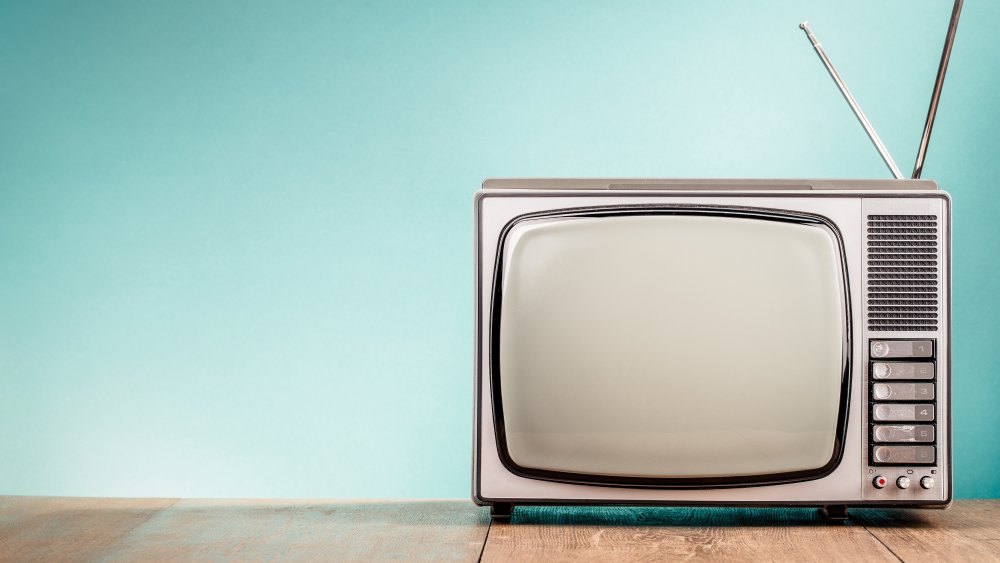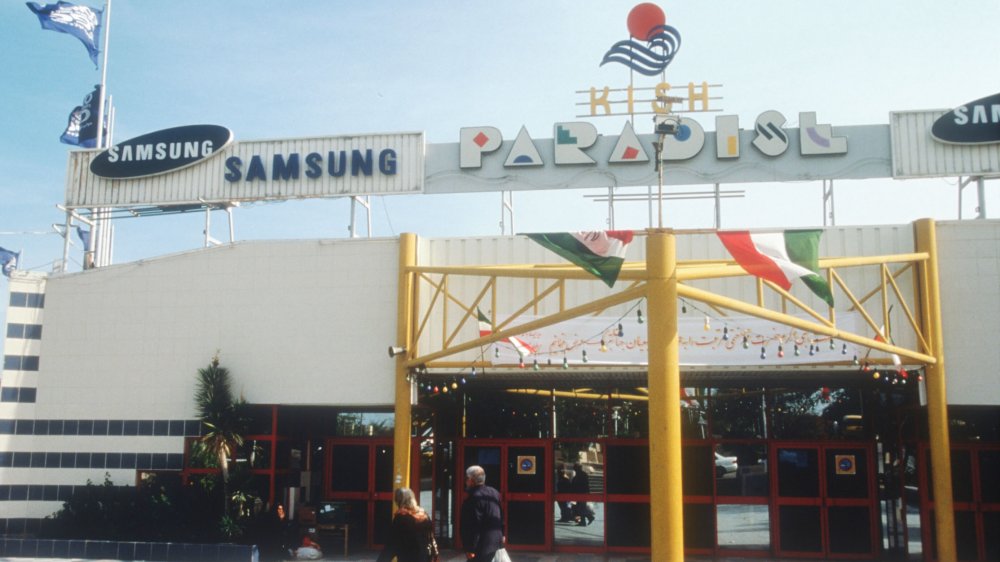Things Americans In The 1980s Couldn't Live Without
Oh, the 1980s. A time where wearing neon was the norm, the mullet was in its heyday, and the Rat Pack of Hollywood stepped aside to make room for a new and much more tubular group of icons for the generation: the Brat Pack. "The '80s are now a perennial fixture of retro culture," explains journalist Simon Reynolds to Inverse. "There's a lot of material, fads and micro-phases that people can draw on."
That being said, is modern pop culture that harks back to the iconic time clouding our perceptions of what it was actually like? "The zeitgeist nostalgia version of this decade is different than what really happened," writes Inverse, and to be fair, a lot of the fads are now pushed to their brink.
As Newsweek so succinctly put it in 2018, "Nostalgia is, most simply if not most eloquently described, comfort food to nurse our existential crises." If that's the case, let's all shout "Cowabunga!" and take a trip down memory lane, remembering all the things that Americans in the 1980s couldn't live without — with some items ranging from the obvious to others that you may have forgotten about.
The portable listening device that started it all
It always starts with a simple idea. "Don't you think a stereo cassette player that you can listen to while walking around is a good idea?" asked Sony chairman, Masaru Ibuka, in the late '70s (via History). As the outlet notes, his question "proved to be one of the great understatements in business history."
When it came out in the summer of 1979, the Sony Walkman was a revolutionary product. As Time points out, they weren't the first company to introduce a portable audio device (the first-ever portable transistor radio came out in 1954), yet they were the first to offer convenience: the Walkman ran on two AA batteries. Privacy was a huge factor, too, as "it featured a headphone jack but no external speaker." While vinyl records were still the go-to while folks were at home, cassette tapes and the Walkman proved to be the perfect outdoor companions, with the device even boasting two headphone jacks "so that two people could listen in at once."
It only took a few years for competing companies such as Panasonic and Toshiba to follow suit with their own versions of this portable listening contraption, and soon enough, the '80s would become known as the "Walkman decade." Coinciding with America's aerobics obsession, "millions used the Walkman to make their workouts more entertaining."
Wearing Spandex was, like, totally bodacious
Step aside, Kim Kardashian, you weren't the one to start the bicycle short trend. No, this obsession of dressing up your Spandex athleisure came to be the norm in the '80s. Invented in 1959, Spandex was initially an anagram for the word "expands," — as the fabric did just that (via Merriam-Webster).
While the '70s were all about flowy styles, it's the body-conscious crowd of the '80s that suddenly adopted Spandex (or Lycra, as it's also known), into mainstream popularity. As the Encyclopedia of Fashion explains, it's high-end fashion designers that took the gym-centric fabric and suddenly made it luxe, such as Azzedine Alaïa with his "formfitting dresses," or Donna Karan, who "launched her first collection [with] Lycra-constructed bodysuits and skirts."
Like many other trends of the generation, the aerobics craze definitely pushed these tight-fitting, (usually neon) pieces into consumer culture (we all remember that Spandex-ridden scene with Jamie Lee Curtis and John Travolta in Perfect). As Rad History puts it, "Spandex most assuredly pointed to the dominance of a younger generation — a generation obvious in their motive to show their youthful energy and their 'perfect' bodies."
Aerobics infiltrated American lives 'with a vengeance'
The 1980s said sayonara to the disco age and hello, aerobics! Maclean's paints the perfect scene in a 1981 article, writing, "Rock 'n' roll music thumps. Muscles stretch. 'All right,' their instructor yells, 'here we go with the arms!'" These dancercises took over North America in the '80s, and as The New York Times notes, "At its peak [...] an estimated 17 million to 20 million [people] did aerobics."
It was more than just an exercise — aerobics had an entire subculture attached to it. From the tights, leotards, matching leg warmers, to the running shoes, "The classes are like a fashion show," revealed aerobics studio owner, Ken Scott, to Maclean's. "Macho men wear track pants and a T-shirt [...] Some of the women's outfits are like tight lacy underwear."
Pushed into popularity thanks to stars such as Olivia Newton-John and Jane Fonda promoting their own aerobics videos (the latter whom, bless her heart, has in recent years migrated to doing TikTok fitness videos), doing these exercises meant you were hip, or as one Boomer told The New York Times, "aerobics was new and everywhere and my friends and I all did it with a vengeance."
Novelty breakfast cereals took away from the food's original purpose
Some of us may remember our childhood mornings eating cereal fondly, while others, not so much (who would have ever seriously picked the bland Life Cereal over, say, Count Chocula?). Nevertheless, the '80s saw cereal trends pivot into an entirely new direction — away from its initial purpose of serving "as a digestive aid."
According to The New York Times, it's after World War II that "cereal consumption increased with the advent of the baby boom" — and sugar was suddenly all the rage. By the '80s, "co-branding cereal was the game," meaning practically every pop culture icon had its own sugary breakfast delight. From Mr. T's crispy, T-shaped corn cereal, Smurf-branded cereal (which surprisingly wasn't blue), to Nerds cereal (because the first thing you eat in a day should be candy, right?), this decade completely missed the point when it came to having a balanced breakfast.
If sugar wasn't already a massive selling point, the '80s were also the time that many toys were found in cereal boxes — until they were declared a choking hazard. Per the Associated Press, in 1988, Kellogg's had to recall millions of flutes and toy binoculars due to the fact that they could break into small pieces, causing kids to choke on them. Even without toys, the sugary cereal trend continued until the '90s, when "organic food went mainstream and parents increasingly searched out more healthful cereals" (via The New York Times).
The '80s had 'enough hairspray to rip a hole in the ozone'
Hairspray has seen a triumphant rise to the top of the beauty industry, only to develop a bad rep — thanks to the 1980s. First invented in aerosol cans in the early 1940s, hairspray truly reached "its peak in the '50s and '60s" when "voluminous, beehive hairstyles" were all the rage (via Review This). The '70s saw a decline, mainly due to the era's flower children who preferred to keep their locks loose and straight. Suddenly, the radical '80s came around.
Bigger is better. At least, that's what the motto seemed to be in the 1980s. Thanks to the explosion of hair metal bands and the number of mohawks and mullets, "voluminous hair, again, represented style and glamor," or as Rolling Stone put it, "[these bands were] armed with enough hairspray to rip a hole in the ozone."
The hairspray of the decade? None other than AquaNet. Vogue dubbed it "the stuff of beauty scaffolding," with Contributing Editor Lynn Yaeger telling the outlet (albeit rather worryingly), "It will kill bugs, too, if you are out of bug spray!" While we may not seek to reach such heights (quite literally) with our 'dos, for those of us who are yearning to sport a sassy side pony or head-banging spikes, you'll be happy to know that AquaNet is shockingly still available to buy to this day — and still giving Raid a run for their money.
'Video killed the radio star'
Contrary to the modern MTV we've grown to love (or hate), the Music Television channel's early days had nothing to do with our current reality TV obsession. Before the time of pregnant teens and The Real World, MTV truly lived up to its namesake.
Premiering in 1981, MTV made its debut with the tongue-in-cheek music video by The Buggles: "Video Killed the Radio Star" (via History). As the website notes, "its programming consisted of basic music videos that were introduced by VJs (video jockeys) and provided for free by record companies." That being said, the start of MTV wasn't exactly a success. "They thought that MTV was a bunch of coked-up rock and roll fiends, and they were right in a way," explained music journalist Craig Marks to NPR. Suddenly, in March of 1982, "several ad executives cooked up what became a legendary ad campaign featuring rock stars yelling 'I want my MTV!'" Featuring A-listers of the decade such as Mick Jagger, The Police, and David Bowie, MTV suddenly hit gold. "That really was the turning point, that and [Michael Jackson's] Thriller were the two things that kept the network afloat," revealed Marks.
After the success of Thriller, record labels even began hiring film directors to shoot these now-iconic videos, such as Spike Jonze and Michel Gondry. With the iconic words that started it all, "Ladies and gentlemen, rock 'n' roll," MTV revolutionized the way we listen to (and watch) music.
The game that launched our trivia obsession
Move over, Monopoly, the 1980s saw the rise of a new board game obsession: Trivial Pursuit. "It's like we became rock stars," mused the game's creator, Chris Haney, to Maclean's in 1993. "People still shake in their boots when they meet us." Launched in America in 1983, Trivial Pursuit was the brainchild of Haney and his roommate at the time, Scott Abbott, who after playing a game of Scrabble one afternoon, decided to create their own board game. The rest, as they say, was history.
Although the initial years of launching the game weren't met with much success (Haney and Abbott had debuted the game in Canada in 1981), it's after they licensed it to major US manufacturer, Selchow and Righter, that it really took off in 1984 (via Thought Co). That year alone, "they sold a record 20 million games in the United States, and retail sales reached nearly 800 million dollars."
As The New York Times reveals, at its prime in the '80s, the board game outsold Monopoly, with its 6,000 trivia questions becoming "a hit with baby boomers" and playing "on their nostalgia." During the decade, "An estimated one in five American households bought the game." Another fun piece of Trivial trivia? In 1983, the cast of The Big Chill starring Tom Berenger and Glenn Close "loved to play Trivial Pursuit on the set." It helps to have A-list endorsements, no?
Finally making science fiction real
We all know the scene: sitting down at our grandparents' computers to help them with a menial task, or even worse, crippling our own laptops with illegal LimeWire downloads. Whatever the case is, it's safe to say that most people born before the mid-'80s can sometimes struggle with technology. The main reason for this? Up until that time, household computers were a thing of science fiction.
Computers were finally made smaller and more accessible in the '80s, with families finally purchasing these electronic contraptions for their homes. According to the Computer History Museum, in 1981, IBM introduced the first "personal computer" (a.k.a. the PC) on Microsoft's MS-DOS operating system. As the website explains, "The IBM PC revolutionized business computing by becoming the first PC to gain widespread adoption by industry."
Soon enough, in 1984, Apple followed suit and launched the Macintosh, airing its very first ad at that year's Super Bowl in January. Proving that for decades to come they'd be dominating the advertising scene, the company enlisted the help of Ridley Scott to direct the commercial, basing it "partly on George Orwell's novel 1984, with the role of Big Brother being filled by a man dictating to the masses from a giant screen, only to have a hammer-wielding woman run up and destroy the screen, freeing the people" (via Computer History Museum). As Steve Jobs declared in 2007, "It didn't just change Apple, it changed the whole computer industry."
Payphones became 'the very fabric of America'
When you think of phones in the '80s, our imaginations run wild with images of yuppie businessmen (à la Michael Douglas in Wall Street) yapping away on their heavy "brick" phones. Considering that these cell devices come in "at almost $10,000 at today's price" (via Science Museum), it's safe to say that they weren't the norm.
So, what else was available? Payphones, of course. "Payphones have rescued countless motorists stranded on dark, lonely highways [and] delivered joyous news of births from hospital waiting rooms," writes The Morning Call, declaring, "In so doing, the payphone has woven itself into the very fabric of America." Although the "first mass-produced payphone" was made available in 1911, it's not until the '80s that they truly flourished. "Between the early 1980s and the mid-'90s, the number of payphones in the United States nearly doubled," states The Atlantic, while adding that it's during this time that the rise of crime at these call stations also peaked.
This breeding ground for illegal activities was common knowledge, causing some cities to lobby for a payphone ban. Eventually, they trickled out of use thanks to the rise of cell phones. Ironically enough, in 2012, New York City announced its plans to turn payphones into WiFi access points, not realizing the "unintended side effect in that WiFi kiosks attracted people that would hang around them for hours, do drugs and even use them to watch porn" (via Techspot). Some things never change, huh?
The building blocks of text messaging
If you wanted to be fancier than your regular ol' payphone user but didn't have the thousands of dollars to splurge on a brick-style cell phone, what other options did the people of the 1980s have? Well, pagers.
Per Thought Co., the pager was first patented in 1949, but only approved for public use in 1958. By the beginning of the '80s, "there were 3.2 million pager users worldwide," and Motorola was starting to produce "devices with alphanumeric displays, which allowed users to receive and send a message through a digital network" — essentially the building blocks of modern text messaging, or even Twitter.
A 1997 Los Angeles Times article reveals that pagers in the '80s "were plain black and mostly marketed to businesses," yet by the '90s, "young people, in their teens to their early 20s [became] the fastest growing group of pager users." As a Soft-Cell Communications representative, Michael Haddad, told the outlet at the time, "[Teens are] on the cutting edge. They're the ones inventing the uses of the pager." Just like that, if it wasn't for the evolution of this '80s sensation, texting as we know it may not have become the norm.
People 'couldn't live without' remote controls
Since products in the 1980s loved simplifying folks' lives, what product furthered our obsession with the boob tube? The iconic remote control. Don't believe us? As one consumer proudly declared to The New York Times in 1986, "he couldn't live without the remote control device that turns on his television set."
Per Tedium, the "first" remote control was technically invented in 1938, yet it paled in comparison with its analog dial "that is about the size of a telephone." In the 1950s, the focus developed from "one man's desire to mute the ads he felt were ruining his TV watching" — because the television-watching experience is paramount to the American dream (via the BBC). According to Tedium, finally, in 1980, "Paul Hrivnak, an engineer with ties to the amateur radio industry, first came up with the infrared remote control." Sold under the Philips name, "Hrivnak's use of infrared became hugely influential — helping the cable box sell numerous units."
As a Toronto Star article declared at the time (via Twitter), Hrivnak's remote was a hit. Soon enough, he developed a converter that retailed for under $200 with numerous perks. One of the most ground-breaking additions, however, was probably the ability to program your nifty remote control "to remember your favorite station and bring it back at a single touch." Naturally, at the time of its release, Philips reported a "'colossal' stack of backorders waiting."
The social oasis of the decade
Is there any other gathering spot that defined the 1980s more than the ubiquitous mall? Probably not. According to Vox, beginning in 1970 all the way to 2017, "the number of American malls quadrupled. [The] population didn't even double in the same time frame." Explaining why the mall was such a hit, Vox notes that outside of home and work, what other place did one have to flock to? With Americans yearning for a spot that "invit[ed] conversation," the mall simply made sense.
The first shopping mall was designed by architect Victor Gruen in 1948, who, after being stranded in Detroit due to a canceled flight, noticed there wasn't really anywhere to go in the run-down city — or the suburbs (via Today I Found Out). After designing the first shopping mall, "the format caught on like wildfire, fueled by tax incentives to build new developments."
Buoyed by consumerism, the mall became an icon of pop culture, even spoofed in some movies such as George A. Romero's 1978 horror hit, Dawn of the Dead. As Matthew Bailey's article, Memory, Place and the Mall: George Romero on Consumerism explains, even in a post-apocalyptic world, the mall acts as "a magnet for the dead, who, somewhere inside, recall it as the central place of their lives." Sure enough, by the time the 80s were in full force, the mall served "as a cultural symbol and a commercial powerhouse" (via The Atlantic).
